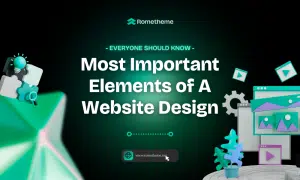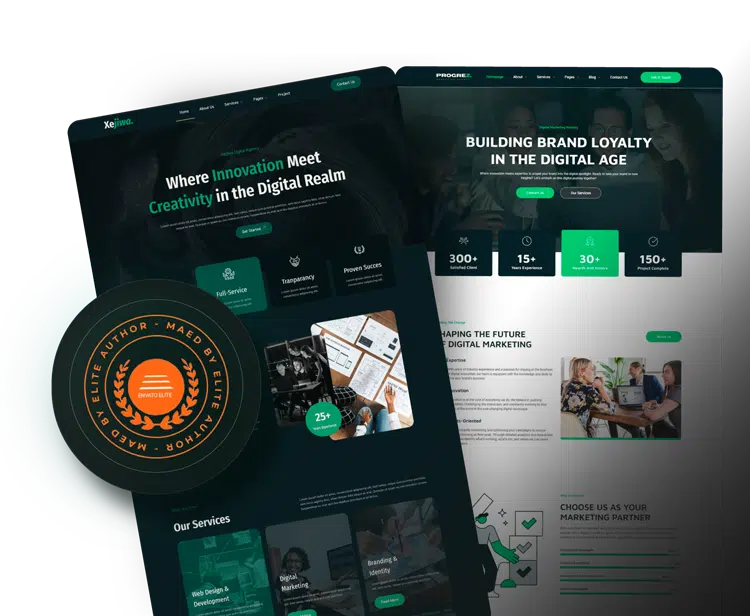Typography is one of the most important and satisfying components of graphic design. Regardless of how experienced you are as a designer, it’s always worthwhile to recharge your mind on typographic principles. Try to learn certain things like the origin of certain fonts or typographic structures as these can enrich the meaning of your designs. Plus, as a designer, it’s your responsibility to know the ins and outs of typography. And once you know the rules, it will be easier for you to break them! Here are 20 of what experts consider the most important principles of the art of typography.
1. Learn the basics
The first step to more effective typography is learning the ins and outs of the art. If you’re new to the principles, you might think typography is just hands-on practice. Actually, it is quite complicated because it is a combination of art and science. The typographical composition consists of a specific vocabulary, accurate measurements, and key specifications that should always be identified and considered. Like with different design firms, you can break the rules only if you memorize them. And that’s only acceptable if you do it on purpose to create something important. To understand the basics of typography better, take the time to study and learn the art.
2. Take note of font communication
Font selection is not a random process. Just searching through your font catalog to pick a font you personally like rarely makes for an efficient end result. This is because there is a psychology associated with certain typography. When designing, you need to make sure your type connects with your audience. This goes beyond just making sure that your copy is perfectly written. It’s also about making sure that the fonts you use are appropriate for your market. You wouldn’t use an elaborate, rainbow-colored font for a law firm brochure, would you? It would be more suitable for a birthday invitation.
3. Understand kerning
Careless kerning work is one of the great sins in the design world. Needless to say, this is an important skill that you should master as soon as possible. Kerning is the act of perfecting the space between characters to produce a sleek, unified pair. It doesn’t sound very important, but the awesome kerning work makes a world of difference. The main goal is to ensure that the space between each character is aesthetically pleasing even to create well-ordered text. Also, programs like Adobe Illustrator can only do so much to fix your kerning errors automatically. These errors are often subtle, especially with long sentences or paragraphs. But for a headline or logo, a bad kerning job can instantly ruin the whole design.
4. Limit your fonts
One of the common mistakes that designers – especially beginners – make is using too many fonts and styles. If you need more than one, be sure to limit your font to just two to three typefaces. Use one font and size for the body, another for the header, and another for the subtitle. Feel free to choose fonts from different typographic families, as long as there is compactness in the installation. Working with two very similar fonts could translate as your fault. Some people will think you weren’t careful enough and accidentally used the wrong font.
5. Practice correct alignment
Alignment is an important concept in typography. Many non-designers tend to choose between Center Aligned and Justified, which makes paragraphs quite difficult to read. If you’ve ever used MS Word, you’re familiar with the four key alignment options: Align Left, Align Center, Align Right and Align. Left alignment, aka Flushed Left, is the most common position used in almost anything because it’s easy to see. Using right alignment, aka Flushed Right, to properly align text to one side only works if the alignment is used correctly. Justified is usually a nightmare for designers. With Align Left and Align Right, watch out for uneven lines. These lines are also quite clear when Center Aligned is used incorrectly. When you see a lot of “bumps” in your text, try adjusting the line length.
6. Bring visual hierarchy into play
Typographic hierarchy is your way of emphasizing the importance of certain types of lines as opposed to others. As a result, you create and move the order in which the audience receives information from the design. This is done by guiding the movement of their sight through the visual hierarchy. Without using a typographic hierarchy, it becomes a challenge for the reader to quickly identify the important pieces of information in the overall design.
7. Work with grids
It cannot be stressed enough how important it is to understand and use the design grid. Working with grids ensures that every little thing on the page is placed in relation to something else to produce logical and visual harmony. It’s what makes everything look cohesive and interconnected. Because of this, you don’t need to use a grid every time you create something. However, it really works to your advantage if you understand how and why grids are used, especially when typography is involved.
8. Practice smart pairing
It is possible to make your layout much more attractive through the installation of typefaces. Then again, using too many fonts at the same time can result in everything turning into a nuisance. Not to mention, multiple fonts can confuse the audience about which design elements are most important. In general, you should only use a maximum of three fonts per design: headings, subtitles, and body text. You get an exception if your design text is long. In this case, you can choose one or two more fonts.
9. Pick an excellent secondary font for pairing
Font placement is important for the legibility of your design. When you have headings and subheads, use two different typefaces that complement each other to form a visual hierarchy. The challenge with font installation is to avoid using two contradictory fonts or two very similar fonts where you can barely see the difference. The second font should be just as captivating as the main typography without losing the uniformity or consistency of the overall design.
10. Learn to measure
Typographic measurements are used to describe the full width of a block of text. Measurement is very important when designing a website. Not all fonts are the same as each other, which means different fonts take up different spaces on a web page. The height of the character is referred to as “x-height”. When you pair fonts, make sure they have the same “x-height”. The width of the character is called the “width set.” This is what covers the entire contents of one letter, plus the space right after it. A “point system” is a setting commonly used to measure fonts.
11. Prioritize readability
Whatever you design, make sure people can easily read your message. This means dark text on a dark background is strictly prohibited. Even worse, avoid using small fonts over high-contrast images. You can have a striking design, but all your efforts will be in vain if your text is not understandable.
12. Choose your font palette wisely
Color is one of the most powerful tools of a designer. It makes sense that a carefully orchestrated color scheme is needed to complete the design. When assembling a font palette, dig into the color theory to determine the exact color intended for your design. For example, orange is thought to increase appetite, which explains why the color is widely used in fast food designs. There are specific rules and guidelines when it comes to color. And while playing around and thinking outside the box can lead to unique and striking designs, make sure your font colors aren’t too distracting, confusing your message.
13. Get a handle on “widows” and “orphans.”
One of the easiest ways to take your design to the next level is to identify and remove widows and/or orphans. Typographic widows are lines of text that were part of a paragraph but have shifted to the next column. Orphans are basically the same with the exception that there is only one word left. It’s almost inevitable for widows and orphans to show up in any type-centered design, so you need to know how to handle it properly. There are several techniques for managing widows and orphans. You can do manual text editing to change the line length to eliminate the problem completely. You can also adjust the text box or column size to enable the type to maneuver around orphans and widows.
14. Avoid stretching fonts
This is a very simple rule that is often overlooked by many designers, even professionals. In general, fonts are created with careful attention to detail (shape and size) of each typeface. Stretching the font takes away its efficiency and value. A common reason people stretch their fonts is to make them a little taller or wider. There is a way to do this without distorting the typeface. You can choose a font height or width from a seemingly endless supply of online fonts. Some come at a price, others are free.
15. Keep in mind that white space is NOT an empty space
White space is a distinctive and valuable tool that can bring out something special from your designs. White space used intelligently has several beneficial effects. This helps focus more on a specific part of your composition. This allows the design to ‘breathe’. This stabilizes the design components. It adds a level of sophistication to the design effortlessly. Without adding new elements, white space can convey a lot of meaning to a design. Let’s say you’re designing a poster for noise-canceling headphones. By simply placing the headphones on the canvas with no additional elements, the white space highlights the gadget. This allows the headphones to be the sole focus of the design. More than that, white space visually translates to how the gadget drowns out outside noise because no other elements are added.
16. Use and treat typography as art
Stop thinking of typography as just the font used in the text that complements your design. Fonts are crafted with care and thus require a level of art which is a valuable advantage to your design toolbox. This goes beyond building plain text. It’s about treating fonts as an art form. To come up with a unique, text-centered design, think about how you can make an eye-catching font a design hero. Also, don’t feel limited by the existing typographic composition. Explore and expand your search to find the perfect one that fits your needs. Then add swirls, textures, lines, and anything else that’s cool, quirky, or fun to enhance the look and feel of the font.
17. Refrain from using design fads
At times, designs are like fashion with never-ending fads and gimmicks. Trends come and go. Today, they are very popular; tomorrow, they are forgotten. And once the luster of the trend wears off, everything curated around it quickly becomes obsolete and ineffective. New design styles and/or methods also fluctuate. Some designers are quick to jump on the bandwagon because new trends are attractive and easy to imitate. But as quickly as trends dominate the design world, they too have gone suddenly. So the logo you just created a year ago that was supposed to last for years is now considered boring and old-fashioned. Therefore, you should also be aware of the font trends that dominate your niche. Keep track of the popular ones and learn to understand why they are becoming prevalent. Studying trends means learning how to analyze design components. Try to measure it, but avoid jumping onto any bandwagon without careful consideration.
18. Work with the right tools
In the same way that a carpenter would not use a screwdriver to hammer nails, a designer must know what tools are up to the task. More importantly, you should know what tools you shouldn’t touch. There are many typography programs available online to help you determine the best tool for a particular procedure. The most popular ones are designed by Adobe. Keep in mind that paid tools can be a bit pricey, so do a product comparison to see which tools you should buy and which you can skip.
19. Adhere to grammar rules
Grammar can be a confusing and complex design component because there are many hidden rules that you may not be aware of. Making an effort to know and learn the rules of design-oriented grammar can help you create a professional-looking design. Three grammatical pitfalls you should watch out for are ampersands, double spaces after punctuation, and dashes and hyphens. There are various guidelines for design-specific sentence structures. And while it may seem like a trivial thing to know, most designers would claim otherwise. Correct grammar is a subtle yet powerful tool that can elevate your designs to a whole new level of professionalism as it displays a keen attention to detail.
20. Find something that inspires you
Just like anything else in life, having inspiration really helps. The best way to learn how to create efficient and attractive typography is to study the available typographic illustrations. Find out what makes them attractive and effective. You can find many articles online about design inspiration. But the World Wide Web isn’t the only place to get inspired. You can light the fire of your passion with your surroundings. Try to find fonts — and graphics — that catch your eye, things that make you want to up your game.
Originally published at https://creativemarket.com/blog/typography-rules on May 25, 2021.









